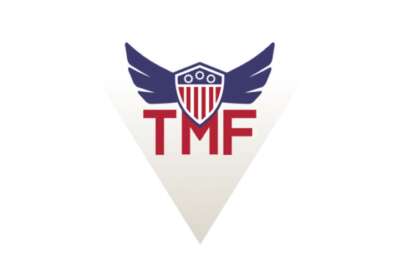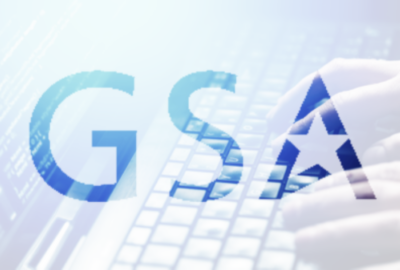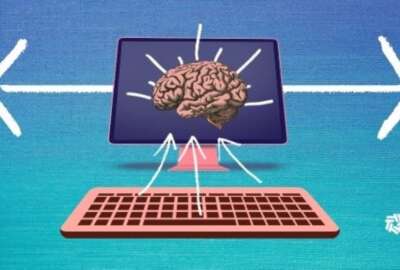TMF funds 3 more agency projects to improve IT, customer service
Agencies across the federal government are tapping into the TMF to financially support projects that will improve public-facing services.
Agencies across the federal government are tapping into the Technology Modernization Fund (TMF) to financially support projects that will improve public-facing services.
Now the TMF is investing more than $70 million in a new wave of IT projects to modernize legacy IT and enable a higher level of customer service.
The General Services Administration announced Wednesday that the TMF is backing three more agency projects.
The Justice Department’s Antitrust Division (ATR) is getting $45.5 million from the TMF to upgrade its IT systems.
The upgrades will help DOJ’s Antitrust Division comb through a greater volume of corporate communications that have shifted away from email and toward chat-based platforms.
ATR Executive Officer Walt Cain said the division’s planned IT upgrades will also “free up time from employees currently spent mitigating IT deficiencies to instead focus on the enforcement work they were hired to do.”
GSA is getting $19.7 million to modernize IT systems that serve as the foundation of the online rulemaking process. It expects to use the funding to help transition its eRulemaking Program to a modernized architecture.
The TMF is also investing more than $6 million into the Armed Forces Retirement Home to implement a modern interoperable electronic health record system.
The Armed Forces Retirement Home’s current decade-old EHR lacks interoperability across the departments of Defense and Veterans Affairs, and private sector provider networks, leading to delays in care.
Federal Chief Information Officer Clare Martorana said in a statement that the TMF investments will “strengthen cybersecurity, reduce burden for the federal workforce so they can focus on mission, and improve trust with the millions counting on the DOJ, GSA, and the Armed Forces Retirement Home to deliver government services.”
The Office of Management and Budget in June 2023 announced the TMF would award $100 million to projects that cut wait times for public-facing federal services, as well as excessive paperwork and other barriers.
Acting TMF Executive Director Larry Bafundo said that the TMF investments will make government services “simpler, more seamless and secure.”
“Good technology is critical to serving the American public, and all of these investments are indicative of how the TMF can help agencies modernize nimbly and effectively,” Bafundo said.
Bafundo, speaking Tuesday at an ATARC webinar, said TMF funding “can be a lever that helps remove some of the constraints that agencies face. But we all know it’s not a silver bullet.”
“I think it’s a really unique opportunity, and a really unique role that that the team can play in helping to support some of these governmentwide efforts,” he said.
Jonathan Finch, the White House’s acting director of digital experience , said the TMF can play a “critical role” in addressing some of the low-hanging fruit of IT modernization projects.
“We know this work will take time. The public expects results now. And so our approach has been very much to parallel-path planning for the future while also taking action and tackling low-hanging fruit today,” Finch said.
The TMF board in August 2023 announced it was seeking proposals for projects aimed at implementing the 21st Century Integrated Digital Experience Act (IDEA) — specifically projects to improve the accessibility of websites and digitizing paper forms.
Rachel Sauter, the TM’s technical investments manager, said the TMF board expects agencies can tackle these types of projects with an infusion of funds, whereas other parts of 21st-Century IDEA may take more time and resources to implement.
“Some agencies might already have a form digitization project underway, and just need additional funding to accelerate the work, while other agencies might be at the very early stages and need funding for discovery work, so they can prioritize the first batch of forms that need digitization,” Sauter said.
The TMF so far has made investments to support 21st-Century IDEA projects at the Office of Personnel Management, the Department of Veterans Affairs and the Bureau of Land Management.
“The 21st-Century IDEA makes it clear that government technology and websites can and must work better for all the people we serve. And the TMF PMO has extensive experience in helping agencies do just that,” Sauter said.
The federal government delivers information and services to more than 400 million individuals, families, businesses and organizations.
“What that translates to is millions of folks interacting with the government, accessing vital services. And in particular, that they’re doing so during really critical and important moments in their lives,” Finch said.
Kevin Hoffman, the director of design and user experience within the VA Office of the CTO’s Community of Practice, said the department expects to see a return on TMF investments in the form of better customer service and more streamlined business processes.
“For the customer, we’re looking at just reducing burden hours and reducing their effort by using the information they’ve already provided to create a more seamless experience,” Hoffman said. “You don’t have to tell us your home address every time you fill out a form. You just need to tell us if it’s changed — and overall just reducing burden hours and filling out forms and making decisions about VA benefits by making personalized information more usable, accessible and consistent.”
Copyright © 2025 Federal News Network. All rights reserved. This website is not intended for users located within the European Economic Area.
Jory Heckman is a reporter at Federal News Network covering U.S. Postal Service, IRS, big data and technology issues.
Follow @jheckmanWFED






